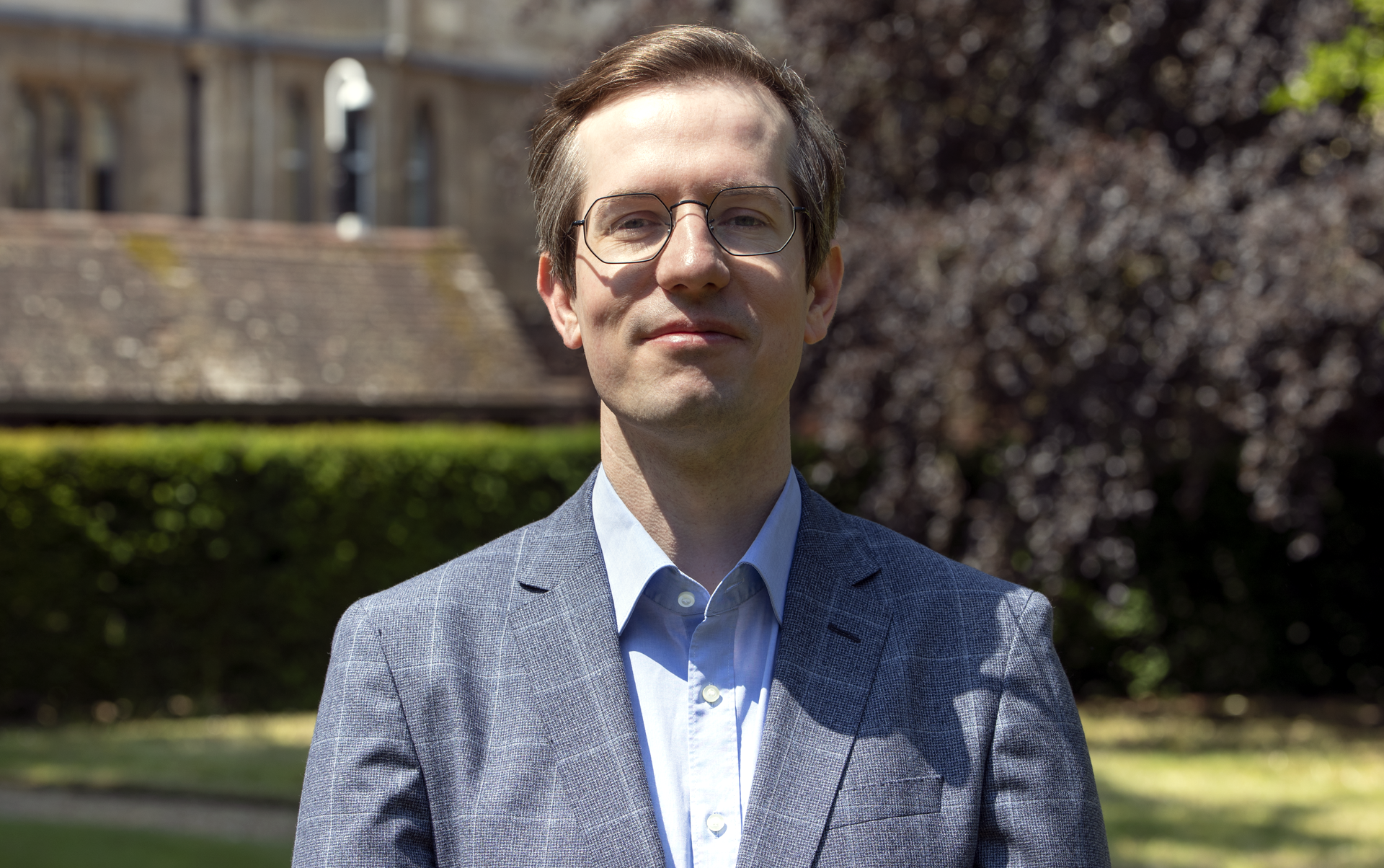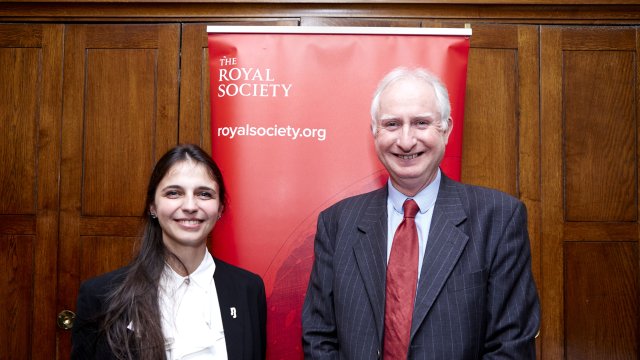In his book 'Towards the Environmental Minimum' (Cambridge University Press, 2021), Dr Stefan Theil argues that courts can play a vital role in challenging polluters, and those responsible for other environmental harms. He argues for the recognition of a comprehensive framework that addresses the relationship between human rights and environmental harm: the environmental minimum.
The key element in this framework lies in establishing a specific risk, which exists where a “reasonable hypothesis is brought forward, based on scientific evidence, that links an environmental harm to a threat towards a specific human right. Should a specific risk be established, the environmental minimum moves on to examine whether the environmental harm has been appropriately regulated by the state. This is determined through minimum standards. Minimum standards are sub-divided into three categories: legal standards, established standards, and emerging standards.”
Dr Stefan Theil
What inspired you to write Towards the Environmental Minimum?
“It was mostly a disparity that I have observed between what, on the one hand, can be quite firm and strong rhetorical commitments to the protection of the environment – verbal, and in constitutions and laws – and the reality, where things don't seem to be getting any better.
“In South America, some countries have written Rights of Nature into their constitutions, but it hasn't stopped the Amazon rainforest being chopped down. In Europe, we supposedly have a very sophisticated and granular regulation of environmental pollution, but again the results on the ground are underwhelming. If you take air pollution, something like 90% of the urban population in Europe is experiencing pollution at a level that is considered to be hazardous to our health by the World Health Organisation.
“So, why are we not getting the results we need? That was the big question.”
Dr Stefan Theil
So, how does your book address this?
“The book basically does two things. First, it takes the commitments that states have made to human rights, and to environmental protection, and derives certain principles from them. The book then tries to give the courts a framework which they can apply in a consistent way, that doesn't overstep their institutional capabilities, and doesn't put them in a position of being an alternative legislature. But at the same time, this framework allows them to robustly require both the executive and the legislature to act on environmental harms that are harming people.”
Why are the courts not doing this currently?
“Well, the European Court of Human Rights, for instance, operates under a framework known as the margin of appreciation doctrine. It means that the Court says, ‘Look, we’re quite far removed from the ‘on the ground’ issues that are the subject of the case we are dealing with here. We’re not best suited to make a policy decision on behalf of the state or to judge whether the state's policy decision has been as effective as it could be.’ So that means that, barring very extreme circumstances, the Court is not going to inject itself into a debate on environmental policy (or climate change, for that matter).
“There was a terrible story a couple of years ago, of a young child suffering from asthma who was killed by air pollution because the ring road in London is so heavily polluted.
“If such a case had come before the European Court of Human Rights, you might have had the Greater London Authority saying something like: ‘We have an action plan. In 20, 30 years, we will clean up our act and meet the emission standards prescribed by law,’ and you might have the representative on behalf of the United Kingdom argue that the action plan for Greater London has been found to be sufficient by domestic UK courts. Other things being equal, the European Court would then say, ‘Okay, fine. We're going to consider the action plan as significant, we’re going to consider it as sufficient, and we're not going to find a violation (of the right to life).’
“The framework I have proposed would produce a different response, the Court might say something like, ‘Scientific evidence tells us that exposure to fine particles above a yearly average has a massive likelihood of increasing the rates of lung cancer, Alzheimer's disease, and other illnesses, and the action plan that you've put forward either doesn't actually propose to reduce it to below that dangerous level, or you have failed to demonstrate how it can credibly do so. This is just not good enough.’
“In so doing, the environmental minimum essentially holds the authorities to account: ‘You know this problem exists. The scientific evidence is robust. Things are bad, people are getting hurt, children are dying, in some extreme cases way before their time. What are you doing about it? Is there a credible plan to alleviate these harms as quickly as possible?
“It's not even so much about the European Court of Human Rights, I can understand why they're being more hands off. It's also about empowering the domestic courts to press regulators, to ask them to explain themselves and convince the court that their regulatory efforts have a good chance of succeeding in the shortest possible timeframe.”
In terms of the domestic courts, how would the existence of this framework at a European level help the UK courts, for example?
“The UK is a signatory to the European Convention on Human Rights and, as a result of the Human Rights Act 1998, domestic UK courts have responsibilities in light of the Convention and the rights that it provides for. Under section 3 of the Human Rights Act 1998, a UK court is obliged to interpret legislation, if at all possible, in such a way that is compatible with human rights law.
“With the environmental minimum, the courts would likewise interpret legislation in such a way as to actually satisfy the right to life, the right to health, or whatever other rights were in play.
"Their interpretation would help fulfil those rights in the everyday practice of government administration of the laws laid down by Parliament. And if it wasn’t possible to fulfil those rights through interpretation of the legislative provision, they could issue a declaration of incompatibility. Essentially, that would mean saying to Parliament, ‘Look, we tried, but we couldn't reconcile this legislation with the Human Rights Act. You need to step in and do something here.”
So, what would need to happen for the framework you have suggested to be adopted?
“So, I think there are several possible ways. First, never count out parliaments. Never count out legislatures deciding that this is an obligation that they want to provide in law - whether in response to public pressure or an election manifesto - to make sure that as a society we do all we can to protect people and act in a way which is compatible with the human rights we signed up to and believe in.
“But even without that, my framework can be implemented under the existing case law of the courts. All it would need is for the courts to say, ‘Instead of simply deferring to whatever it is that you've come up with in order to address the environmental problem, we are going to, on the basis of scientific evidence, evaluate whether or not the approach is good enough. Are you going to reach the goal that you have set yourself? And is that goal itself sufficient, given what we know about the environmental problem? If it isn't, we may require you to update your goal and methods of achieving it in a timely manner.’ I don't think that's too much to ask of regulators.”
So there wouldn’t need to be new legislation, or an amendment to the Convention..?
“No new legislation, nor indeed a judicial revolution, needed. I think it’s completely within the bounds of what courts do in many areas of public law: not prescribing any particular outcome to an environmental policy question, but insisting that whatever answer government does come up with makes rational sense and is within the guiderails of our commitment to our longstanding human rights: both under common law and the European Convention.”
You also mention, in your book, the need for good faith. There are multiple challenges facing human rights, so how does this framework fit into a world of populist regimes and renegade states?
“Yeah, so there are clear limits to the framework I propose. If you have a state that is not interested in upholding human rights protections and doesn't care about its international reputation, then my book does not have much to say. I mean, being a lawyer, to me the answer will always involve law and a belief that the law can make meaningful changes to how states and people behave.
"But if you have a state that disrespects the rule of law, where law is seen merely as an expression of raw power and not as a constraint - ‘might is right’ - and where law does not spring from a legitimate democratic process, then law doesn't really matter anymore and neither does my framework.
“For this framework to work, you need to have a state that, at very least, has a commitment to the rule of law, and is interested in complying with human rights obligations.
“So, with climate change, especially because it is a global effort, there will always be a need for diplomacy and compromise: horse trading, backroom political deals and good old-fashioned diplomacy are required to address the problem. Ultimately there needs to be to be a negotiated settlement. We need to find a way of bringing democracies and dictatorships together, because we all need to cooperate on this issue.
“The law comes afterwards. It comes when we’re dealing with questions of legal design, treaties and compliance, and when we’re ensuring that people trust each other and that they trust that other states are going to do what they promise to do. Law can be at the forefront of environmental issues, but only in states that are committed to the rule of law and human rights.”
But, even limiting yourself to those committed democracies, there’s still room for improvement.
“Totally. We have a lot of very robust representative democracies that are committed to human rights but are currently doing a terrible job in terms of environmental issues.
"Vested economic interests in the United Kingdom, in the US and in Europe often operate highly polluting industries: they're there, they need to be challenged, and I think that, amongst other things, this framework will help us do that.”
Dr Stefan Theil is Assistant Professor in Public Law and a Fellow of Sidney Sussex College.
Towards the Environmental Minimum – Environmental Protection through Human Rights is available from Cambridge University Press.
Banner photo: Ruedi Haberli, via Unsplash.com.
If you have something that would make a good news or feature item, please email news@sid.cam.ac.uk



